|
Dennis Rader - BTK killer - A biography
1975-1979
In November, 1974 Dennis Rader finally found a steady job with ADT
Security, a company specializing in the installation of alarm systems.
He would stay with ADT for the next 14 years. He rose to the position of
installation supervisor, which gave him some flexibility in terms of
where he could be during the day.
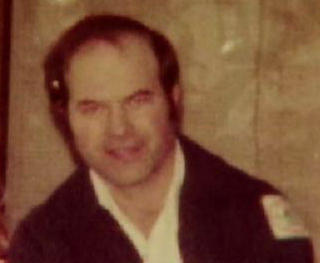
In 1975 the Raders' first child was born, Brian. Dennis had a full
schedule between ADT and night school at WSU. Even though he is not
known to have committed any known crime during 1975 and 1976, by his own
description the trolling for more victims never did cease then or until
his arrest 30 years later.
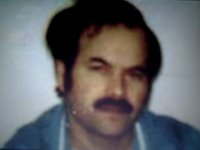
On March 17, 1977 Rader decided it was time for a murder one way or
another. He had been trolling a particular neighborhood fairly heavily
and had some women in mind there. He had met a woman named Cheryl in a
bar and found her quite interesting. Cheryl was renting a house with
another woman and often had parties there in those days.
Rader found out where she lived and decided it would be "a go",
meaning a definite hit. Fortunately for Cheryl and her friends, no one
was home when Rader came around that day. Rader states he had also cased
another home in the neighborhood, but that no one was there either.

Rader went trolling on foot down Hydraulic Street and encountered a
five year old boy, Steve Relford. He pulled out a photo of his own wife
and son and asked Steve if he knew who they were. Steve said he didn't
and proceeded on home to complete the errand to the store his mother had
sent him on. Rader soon knocked on the door, and Steve answered.
He was posing as an official person, perhaps a detective, and gained
entry into the home. There were three children in the home including
Steve and an 8 year old brother and a 4 year old sister. Rader abruptly
turned off the television and lowered the blinds. (Photo and a story
about Steve Relford from CNN.com).

The mother emerged in a bathrobe, demanding to know what was going
on. At gunpoint, Rader ordered all the children into the bathroom, where
he blockaded the children in. He made his intentions clear to the mother,
Shirley Vian, 24, that he was going to bind her up and have his way with
her.
However, it wasn't rape he was after as he led Shirley to believe.
Rader claims he got her a glass of water after she threw up and allowed
her to have a smoke to calm down. Shirley was ill that day and her
common law husband Richard Vian wouldn't be home till later.
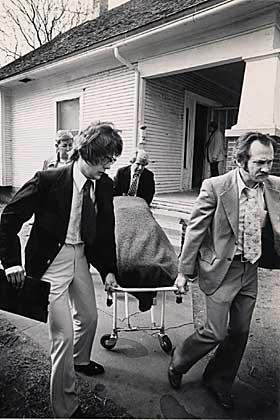
Rader tied her up as promised but then strangled her to death with a
cord around her neck. He left semen on panties found next to the body.
He was gone before the children could break out of the bathroom and
summon help. Rader later stated that a ringing telephone unnerved him
and caused him to leave before he could kill the children.

In December, 1977 Rader became fixated on Nancy Fox, 25, stalking
her from her residence and workplace. On the evening of December 8 he
broke into her modest duplex via a rear bedroom window after first
cutting the phone line.
He awaited her arrival from her evening job at a jewerly store.
Nancy was the sole occupant of the duplex at that time and lived alone.
The initial confrontation took place in the kitchen, presumably at
gunpoint. Rader stated that he had a sexual issue and needed to tie her
up to rape her. Other than making barbed comments, Nancy didn't fight
back.
She was ordered into the bedroom after being allowed to partly
disrobe in the bathroom. Rader tied her to the bed and undressed himself.
At that point he announced who he really was, making it clear he was the
same person who had killed the Oteros, and proceeded to strangle her to
death with a ligature. He left semen deposited on a nightgown found next
to the body.

The following morning after reporting to work at ADT and leaving the
office in a company van, Rader stopped at a phone booth just a couple
blocks down the street. He dialed a police dispatcher and said, "Yes,
you will find a home-acide at 843 South Pershing. Nancy Fox...That is
correct", and left the receiver dangling.
Police rushed to the residence and found the lifeless body still
lying on the bed, the head badly swollen. A tape recording of that call
was eventually played repeatedly over and over in the Wichita media, but
no one including Rader's co-workers or family was able to recognize the
voice.
In early 1978 Rader attempted to send a postcard with a sarcastic
poem, "Shirley Locks", to the Wichita Eagle but no one recognized the
significance of it until days later. It was followed by a letter that
was taken quite seriously. In it the killer took full responsibility for
the Otero, Shirley Vian and Nancy Fox murders plus an unnamed seventh
victim later assumed to be Kathryn Bright.
The writer suggested a number of names for himself, including B.T.K.
It was written in the same style as the 1974 letter, and mentioned a
mysterious "factor x" that the writer said was the reason for his need
to kill people. Also included was a bizarre poem, "Oh death to Nancy",
mimicking an old folk song and poem called "Oh Death".
This letter forced the Wichita Police Department to make a decision.
It was decided that it would be publicly announced that Wichita had an
unknown serial killer on the loose, and citizens were urged to be extra
careful about locking doors and looking out for each other. A whole
generation of women grew up in Wichita that routinely checked their
phones for a dial tone whenever re-entering their homes, to make sure
the phone line had not been cut by an intruder.

In June, 1978 Paula gave birth to the Rader's second and final child,
Kerri. She had been pregnant through all the events during and following
Nancy Fox's murder.
In April, 1979 Rader broke into the home of Anna Williams, a 63 year
old widow who had recently lost her husband. He waited fruitlessly for
Anna to come home, but she didn't until later that evening. Rader
pilfered a few small items and left, disappointed.
In June of that year, just days before Rader's graduation ceremony
at WSU, Anna received a package in the mail with a poem entitled "Oh
Anna why didn't you appear", a drawing of what Rader had intended to do
her and a few of the things he had stolen. The next day a similar
package arrived at the studios of KAKE-TV in Wichita. Anna was terrified
and quickly moved far away from Wichita.
The 1980s
If Dennis Rader had enjoyed all the publicity BTK was getting in the
late 1970s, he must have grown increasingly wary of being caught. Ahead
in the game, he knew when to fold it. Nothing more was heard from the
killer publicly until 2004, except for one letter that was not
officially acknowledged to have come from BTK in 1988.
Rader continued his trolling while becoming more active in his
church and also became a Cub Scout leader when his son was old enough.
In fact, son Brian would eventually attain the status of Eagle Scout,
undoubtedly with ample encouragement and guidance from his father.
Rader never utilized his degree in Administation of Justice from WSU,
but was known to have envied becoming a police officer and was also
reportedly involved at times in reserve officer programs as a volunteer.
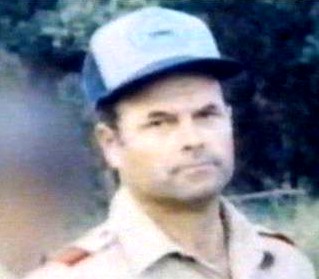
It is impossible to understand the story of Dennis Rader unless one
has some knowledge of what a psychopath is. A psychopath is a person who
is incapable of empathy for other beings. They are self-centered to the
extreme that no one else matters unless someone serves a purpose or
potential purpose for the psychopath.
This is a person who has no problems with hurting others, no guilt,
shame or remorse. It is a person who is deceptive, lies freely and
skillfully without shame or regret. Dennis Rader from his youth learned
how to live in two worlds, the conventional, social realm everyone lives
in and his own private world of torture and death.
He was extremely skillful in separating these two worlds, what is
known as compartmentalizing. He could go out and commit the most
atrocious murder, and come home like nothing had happened. It was like
changing clothes or switching to a different channel.
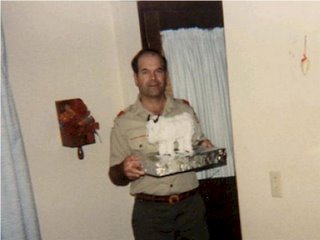
By 1985 as far as anyone knows, it had been a number of years since
the last kill. Rader was a busy family man, a person with no criminal
record, someone apparently religious and helpful at church. Despite all
this he took great lengths to pull off his next murder. He was now 40
years old, his son was 9 and his daughter 6.
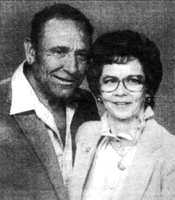
Marine Hedge, 53, was a widowed neighbor who lived on the same
street in Park City as the Raders. She was a petite, friendly woman,
mother of four grown children, who had lost her husband Thomas in the
past year.
In the 1970s the Raders had purchased a small home on Independence
Street. During their walks Dennis and Paula would sometimes wave to
Marine, who enjoyed gardening around the home as did Dennis.
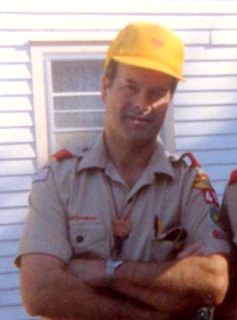
On the weekend of April 27, 1985, Rader was attending a Boy Scout
camp-out just outside of Wichita. He left camp in the evening, with the
pretext of having a headache and needing to get to town to buy something
for it.
He parked his car by a bowling alley in the city and bought himself
a beer. He swished the liquid in his mouth and spit it out, and also
deliberately got some beer on his clothing so he would have a smell like
he had been drinking.
Calling a cab, he pretended to be drunk and instructed the driver to
take him to a park in Park City so he could walk it off before arriving
home. The park adjoined the backyard of the Hedge property. Rader was
disappointed to see Marine's car in the carport, and assumed she was
home.
He cut the phone line and quietly pried open a rear door using a
screwdriver. It turned out that no one was home as he had hoped, and
soon a car pulled up and Rader hid in a bedroom closet. Marine Hedge and
a friend, Gerald Porter, entered the home. Gerald left for the night
around 1 a.m. Rader waited while Marine went to bed and fell asleep.
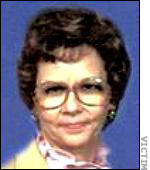
Rader crept out of the closet. He flicked on the bathroom light and
then pounced on Marine in the bed, manually choking the 100 pound woman
to death. However, his fantasy-driven outing was far from over. He
dragged the body with the bedding to her car and put her in the trunk.
Rader drove directly to his church, where he was a person so trusted
that he had the keys to the building. He dragged the body underneath
some trees and entered the building down to the basement, where he taped
black plastic over the basement windows so no one could see inside.
He then dragged the body down into the basement and photographed it
in various poses. It was getting late and Rader hurriedly returned the
body to the car trunk and took off. He found a dumping place in a ditch
along a dirt road several miles outside of Park City, and semi-concealed
the body under some trimmings.
He left knotted pantyhose by the body, which apparently had been
used for some purpose during the night. At one point Rader had dropped
the car key onto the dashboard and the key slid down and wedged under
the windshield. He used a rock to smash a corner of the windshield to
retrieve the key.
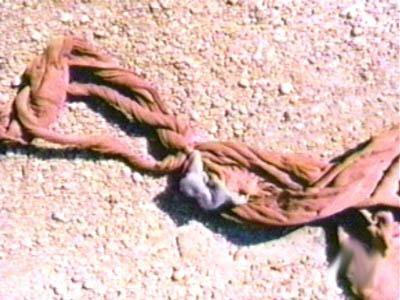
By now it was getting light and Rader hurriedly made his way back to
where he had left his car in Wichita. He parked Marine's car there after
wiping it down for fingerprints, and returned to the Scout camp he had
deserted earlier. He was never connected to this crime until some 20
years later. He still had those photographs in his collection.

In September, 1986 Rader had his eye on Vicki Wegerle, a 28 year old
mother of two. He would walk by her house, hearing strains of piano
music as Vickie played. On September 16 he took some time out for a "PJ"
or project, as he called his murder prospects.
Sometime after 10 a.m. he showed up at Vickie's door, dressed up
like a telephone repairman complete with hardhat. He somehow managed to
get Vicki to allow him inside the home to check the phone line. He
fiddled with her phone with an improvised testing gadget and then
informed her she was going to be tied up.
Presumably using a gun, he forced her into a bedroom and attempted
to tie her up, but she gave him a fierce battle scratching him in the
process. Rader prevailed in the physical fight and secured her with
ropes, then proceeded to strangle her to death using pantyhose as a
ligature.
He photographed the dying body in a few poses and hastily left in
the Wegerle car. Vicki had warned him that her husband would be arriving
home shortly. Rader later stated that had the husband come home, he
would have been killed also.
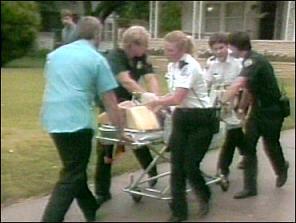
Bill Wegerle indeed came home soon afterward and even saw his own
car going in the opposite direction away from the house. He couldn't
identify the driver, but it didn't appear to be Vicki.
His 2 year old son Brandon was still in the living room, unattended.
Bill couldn't find Vicki at first, who was on the bedroom floor behind
the bed, but finally did after a while. She was rushed to a hospital
with paramedics desperately trying to revive her, but was pronounced
dead a short time later.
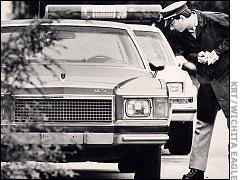
BTK meanwhile had driven around the city for a while disposing of
evidence, then returned to the area near the house and parked the
Wegerle's car a couple blocks from their home. He exited the area on
foot and returned to his own car nearby. Changing clothes, he escaped
all detection for this crime and was never suspected of it.
Bill Wegerle's life soon took a turn for the drastic. Not only had
he lost his wife and mother of his two children, he was faced with a
hostile and skeptical police and public who never seemed satisfied that
he was innocent of this crime. This dark cloud of suspicion hung over
him for the next 18 years.
Nobody had heard from BTK in eight years and the police discounted
this as a BTK crime. No charges were ever filed against Bill, but the
anguish of those years was keen. (Photo and a story about the Wegerle
family from CBSnews.com and the program 48 Hours
Mystery).

At the very end of 1987 another notorious family murder occurred in
Wichita, this time three members of the Phillip Fager family: the father,
Phillip, and two teenage daughters.
A contractor who worked for the Fagers was arrested in Florida after
leaving the murder scene in the Fager car and using a credit card stolen
from them. Bill Butterworth was eventually acquitted by a jury due to a
lack of physical evidence, but the police remain satisfied that he was
the murderer.
A letter was received by Mrs. Fager in early 1988 from BTK, who
stated he did not do this crime but admired the work of the man who did.
This was never confirmed as a genuine BTK communication until police
found a copy of the original letter in Rader's stash 17 years later.
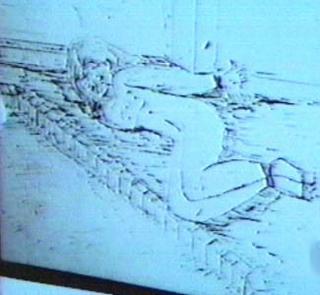
He also had his own illustration of what he thought had happened
that day to one of the girls, but it was not accurate to the real crime
scene.
In 1988 Rader succeeded in getting himself fired from ADT Security.
The official reason stated by the company was that he was not getting
his work quota done. The varying reports from co-workers describe a man
who could be difficult to work with but was customer-oriented.
One description of him from that time paints a picture of a man who
wanted to be a police officer but had been forced to settle for what
Rader saw as the inferior position of being an alarm installer. In any
case, he was out of a steady job.
There is a record of Rader working for the US Census Bureau for
several months only in 1989 as a field operations supervisor. Otherwise
he may have been unemployed or finding temporary work until landing a
new position in 1991.
dennisraderbtk.blogspot.com |




















